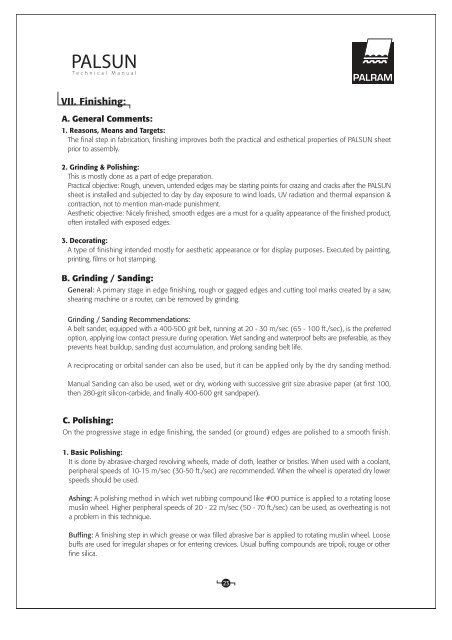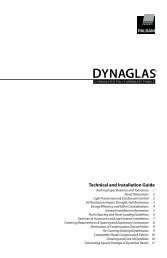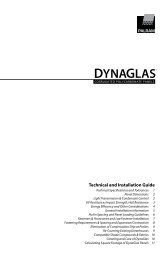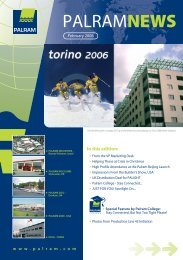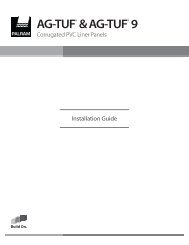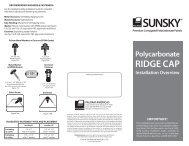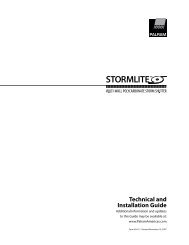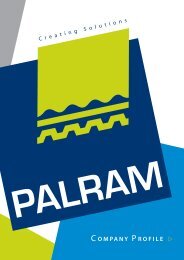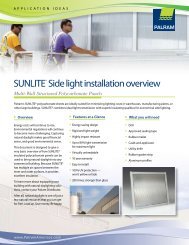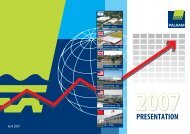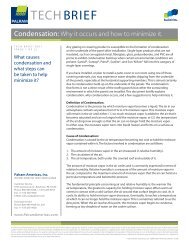PALSUN Technical Guide
PALSUN Technical Guide
PALSUN Technical Guide
Create successful ePaper yourself
Turn your PDF publications into a flip-book with our unique Google optimized e-Paper software.
<strong>PALSUN</strong><strong>Technical</strong> ManualVII. Finishing:A. General Comments:1. Reasons, Means and Targets:The final step in fabrication, finishing improves both the practical and esthetical properties of <strong>PALSUN</strong> sheetprior to assembly.2. Grinding & Polishing:This is mostly done as a part of edge preparation.Practical objective: Rough, uneven, untended edges may be starting points for crazing and cracks after the <strong>PALSUN</strong>sheet is installed and subjected to day by day exposure to wind loads, UV radiation and thermal expansion &contraction, not to mention man-made punishment.Aesthetic objective: Nicely finished, smooth edges are a must for a quality appearance of the finished product,often installed with exposed edges.3. Decorating:A type of finishing intended mostly for aesthetic appearance or for display purposes. Executed by painting,printing, films or hot stamping.B. Grinding / Sanding:General: A primary stage in edge finishing, rough or gagged edges and cutting tool marks created by a saw,shearing machine or a router, can be removed by grinding.Grinding / Sanding Recommendations:A belt sander, equipped with a 400-500 grit belt, running at 20 - 30 m/sec (65 - 100 ft./sec), is the preferredoption, applying low contact pressure during operation. Wet sanding and waterproof belts are preferable, as theyprevents heat buildup, sanding dust accumulation, and prolong sanding belt life.A reciprocating or orbital sander can also be used, but it can be applied only by the dry sanding method.Manual Sanding can also be used, wet or dry, working with successive grit size abrasive paper (at first 100,then 280-grit silicon-carbide, and finally 400-600 grit sandpaper).C. Polishing:On the progressive stage in edge finishing, the sanded (or ground) edges are polished to a smooth finish.1. Basic Polishing:It is done by abrasive-charged revolving wheels, made of cloth, leather or bristles. When used with a coolant,peripheral speeds of 10-15 m/sec (30-50 ft./sec) are recommended. When the wheel is operated dry lowerspeeds should be used.Ashing: A polishing method in which wet rubbing compound like #00 pumice is applied to a rotating loosemuslin wheel. Higher peripheral speeds of 20 - 22 m/sec (50 - 70 ft./sec) can be used, as overheating is nota problem in this technique.Buffing: A finishing step in which grease or wax filled abrasive bar is applied to rotating muslin wheel. Loosebuffs are used for irregular shapes or for entering crevices. Usual buffing compounds are tripoli, rouge or otherfine silica.23


